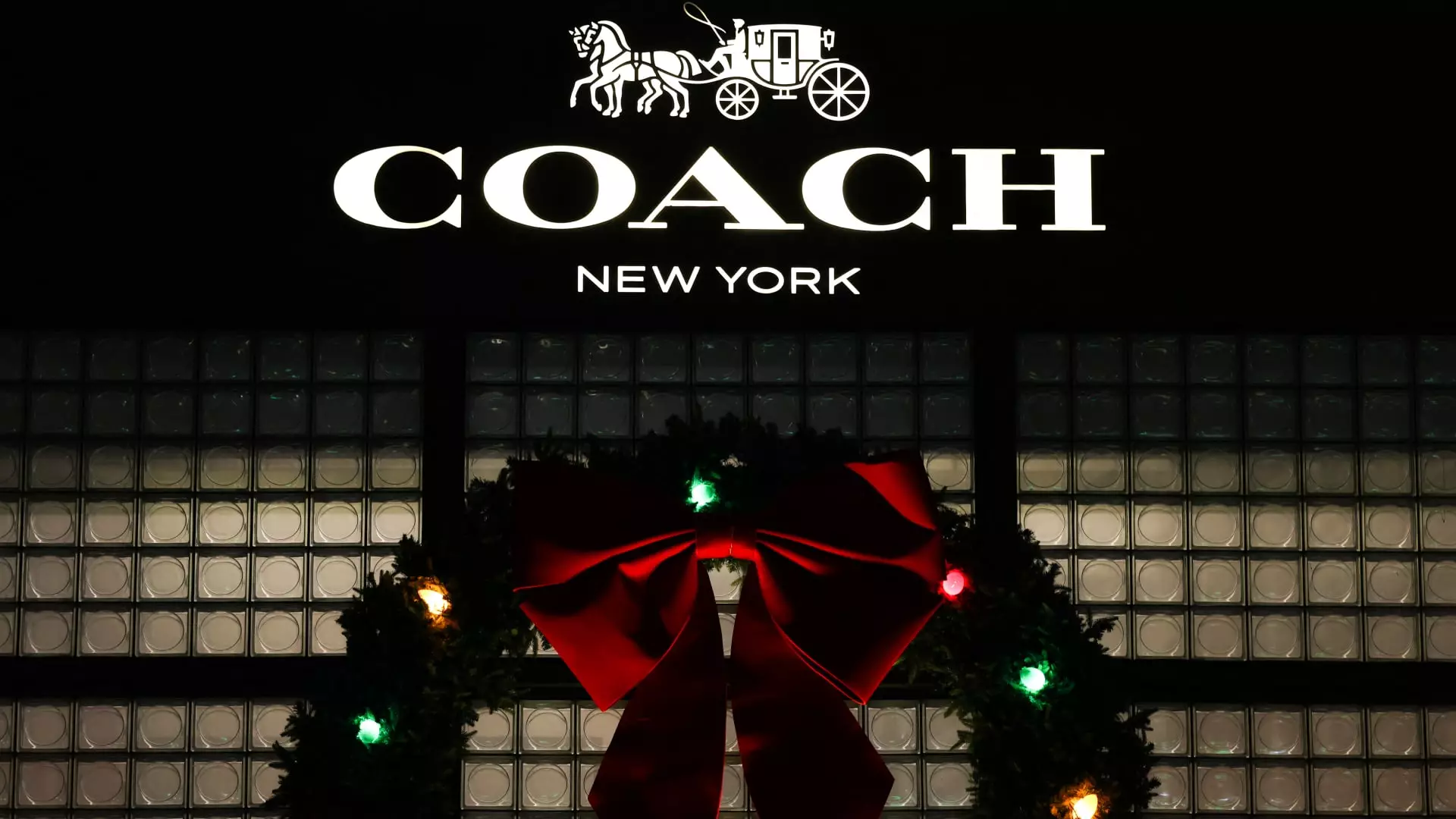Tapestry, the company that owns the renowned Coach brand, marked a significant milestone by reporting an impressive 12% surge in share prices following the publication of its holiday-quarter earnings. This remarkable performance was driven by sales that exceeded analyst expectations, leading the company to raise its full-year revenue forecast to over $6.85 billion. This projection indicates a steady increase of approximately 3% over the previous year. Additionally, Tapestry has adjusted its earnings per share (EPS) expectations upward to a range between $4.85 and $4.90, showcasing a commendable leap from its previous projections of $4.50 to $4.55. This positive financial momentum comes on the heels of a tumultuous period marked by the cancellation of a planned merger with Capri, which would have combined six major fashion brands from both companies.
The context of Tapestry’s success becomes even more pronounced when viewed alongside Capri’s recent performance. Capri’s holiday quarter results revealed a troubling decline in sales for prominent brands like Versace and Michael Kors, showcasing significant double-digit decreases. CEO John Idol acknowledged these challenges, attributing them to strategic missteps. Notably, the decision to cut lower-priced accessories backfired, hindering the company’s ability to attract new customers. This contrast not only highlights Tapestry’s successful strategies but also raises questions about Capri’s direction in the increasingly competitive luxury landscape.
In a CNBC interview, Tapestry’s CEO Joanne Crevoiserat emphasized the importance of adaptability in consumer spending habits. She noted that while shoppers are more selective, Coach has captured market interest through a focus on innovation, relevance, and providing value. This approach reflects a broader trend where successful brands align their strategies with evolving consumer preferences. Tapestry’s positive results showcase its brand-building principles, rooted in strong consumer connections that withstand market fluctuations.
Examining Tapestry’s fiscal second quarter reveals a compelling narrative. The company reported earnings per share of $2.00, well above the $1.75 expected by analysts, alongside revenue of $2.20 billion, surpassing estimates of $2.11 billion. Coach emerged as the standout performer, experiencing an 11% year-over-year revenue increase. In contrast, Kate Spade and Stuart Weitzman saw declines in revenues of 10% and 15%, respectively. This disparity underscores the need for Tapestry to refine its approach with its less-performing brands while simultaneously capitalizing on Coach’s resilience.
The financial outlook provided by Tapestry included important considerations regarding tariffs on imports from China. CFO Scott Roe clarified that the potential impact of a 10% tariff, effective February 4, is expected to be minimal, given the limited proportion of Tapestry’s sourcing that comes from China. This demonstrates Tapestry’s strategic foresight as it manages outside economic pressures while focusing on internal growth avenues. Moreover, Crevoiserat’s comments on delaying any merger and acquisition plans signal an intent to stabilize and nurture existing brands such as Coach and Kate Spade.
An interesting highlight from the earnings report was the remarkable growth in Tapestry’s European sales, which soared by 45%. In contrast, the company noted slower growth in Greater China and a slight decline in Japan. Crevoiserat pointed out that despite being Tapestry’s largest market, North America contributed 70% of quarterly sales, indicating an underserved opportunity in Europe. She emphasized a renewed focus on customer acquisition in these underdeveloped regions, capitalizing on lower sales levels and fewer existing customers.
One of the noteworthy elements of Tapestry’s strategy is its ability to attract new and younger shoppers. The company reported welcoming approximately 2.7 million new customers in North America, with over half of these belonging to the Gen Z and millennial demographics. Highlighted products like the Tabby shoulder bag and the New York collection have gained traction, particularly among younger consumers, reflecting Tapestry’s responsiveness to market trends.
Tapestry is turning its attention to revitalizing Kate Spade, appointing Eva Erdmann as the brand’s new CEO. A strategic initiative includes significantly reducing the variety of handbag styles available, aiming to solidify key product lines instead of relying on discounts. With a commitment to minimize promotional activities, Tapestry seeks to enhance the brand’s market position sustainably. This forward-thinking approach aims not just for immediate gains but for long-term viability in an ever-changing retail landscape.
Tapestry’s compelling financial performance amid market challenges, alongside strategic initiatives focusing on branding and market expansion, suggests a strong and resilient future. By leveraging its heritage brands like Coach while carefully nurturing others like Kate Spade, Tapestry is positioning itself to navigate the complexities of the luxury fashion industry effectively.


Leave a Reply